Guided Ascent of Ben Nevis via Tower Ridge
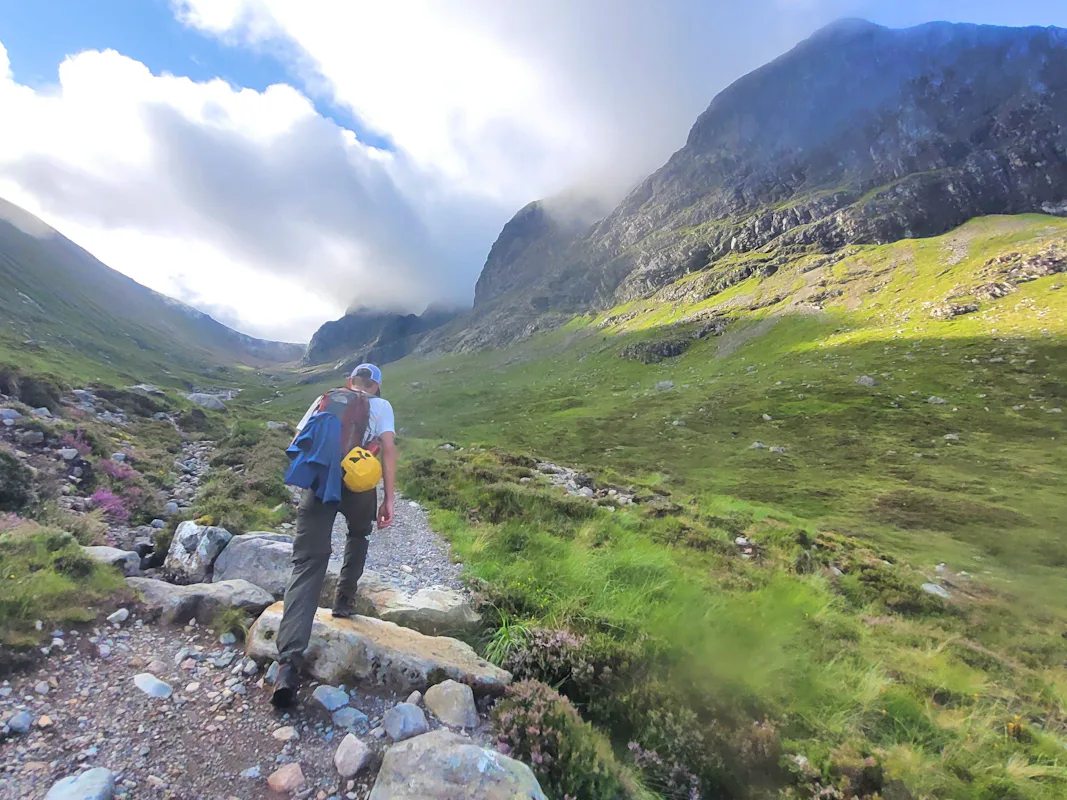
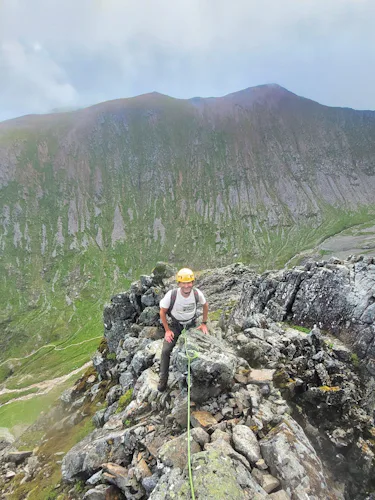
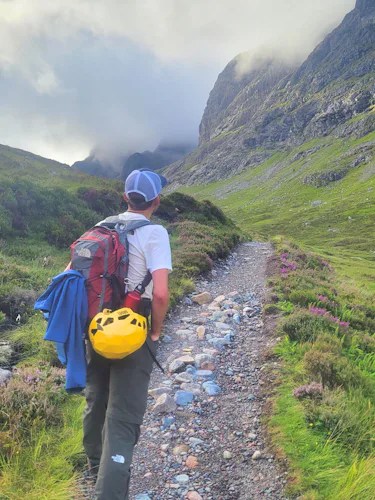
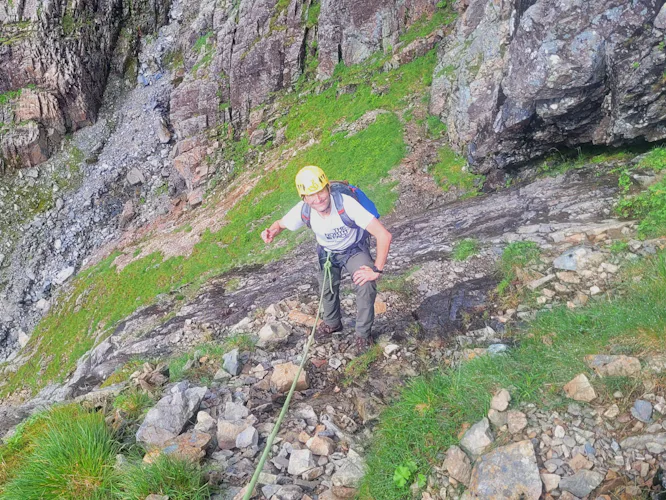
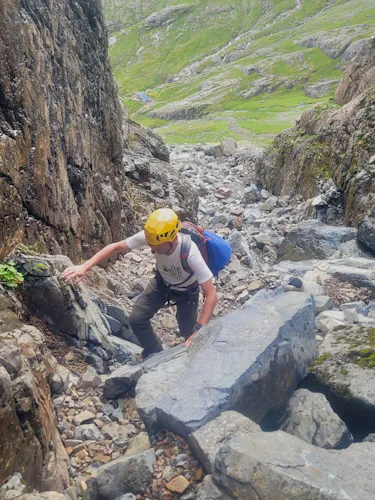
Join MIC certified mountain guide Ken Applegate on a unique guided ascent of the stunning Ben Nevis mountain via Tower Ridge!
Highlands
1 Day
Jun - Oct
Low
Intermediate
Description
The UK’s highest mountain is the Ben Nevis and a must for climbers that want to know the region. It stands at 1,345 metres above sea level and is close to Fort William. Every year it attracts approximately 100,000 ascents! Tower Ridge is one of the possible routes to climb it, and perfect for those that want the challenge of a steep climb and an intense scramble. On this guided ascent of the Ben Nevis via Tower Ridge we help you to the top of this stunning spot so that you can make the best of this intense climbing experience!
We begin by meeting early in the morning for a quick equipment check and to go over the day’s itinerary. We will also cover the techniques and safety measures you will need for the ascent. Then, we will set of for a 6-9 hour day in the mountain. Throughout the ascent, we will use a rope to ensure that you ascend safely and we will also coach you as we go along. As we go up, you will be able to enjoy the unique scenery of the Ben Nevis and surrounding region. Then, depending of how we are doing with time and how we are feeling, we might also be able to descend through the Ledge Route and CMD.
As this is a challenging ascent, a good fitness level is necessary and some prior experience preferable. However, whether you have experience or are new to climbing we will be there every step of the way to make sure you feel safe. We will give you tips and instructions, and also help you out with the ropework.
Are you ready to climb the UK’s tallest peak? Then book your place now and join us on this guided ascent of the Ben Nevis via Tower Ridge!
Want to try more climbs in the Scottish Highland’s region? Then join us on this guided ascent of the Curved Ridge!
Price includes
- Guiding fee
Price details
The price includes Guiding and Instruction and free use of harness and helmets. Accommodation is not included but we can help make arrangements or recommend suitable places to stay whilst visiting Fort William and the surrounding area.
Details
More info
Socks –Go for a medium to thick pair of synthetic or wool/synthetic blend socks.
Thermal/Base Layers –A thermal or wicking top is far better than cotton.
Fleeces –At least one fleece layer for your upper body. If you get cold easily perhaps add a fleece gilet/vest to your layering. Having an extra fleece top or synthetic layer in a waterproof liner at the bottom of your rucksack is useful if cool conditions are likely to be encountered.
Windshirt or lightweight softshell jacket –Ideal for dry conditions.
Walking trousers –Polycotton, polyester or softshell is ideal.
Warm Hat & Gloves –A warm hat can still be very useful even in summer. For Skye, leather work or gardening gloves, which are cheap and durable are ideal. Remember that even in the height of summer, with a bit of rain and wind, it will still be quite chilly.
Waterproof jacket and over trousers ( Outer shell clothing) –The trousers should have at least a knee length zip enabling them to be fitted over boots. Lightweight waterproofs are ok.
Rucsac –A medium volume sac (30 -40 litres) is best for mountaineering. Use a strong plastic rucsac liner to keep the contents dry. External Rucsack covers have a habit of blowing away and don’t work as well as an internal liner. Everything needs to fit inside your sac.
Bivvy Bag –A large person sized poly or foil survival bag is the minimum requirement, essential.
Gaiters or Stop-tous –Useful, but not essential. Not really necessary on the Skye Cuillins.
Head Torch –Even in summer it’s good practise to carry a small headtorch.
First Aid kit –A small personal pack including medication for blisters. Suncream and sunglasses if good forecast.
Compass/Map –(OS or BMC/Harveys) Harvey maps produce the best map for Skye. The map should be weather-proofed in a clear plastic map case or covered with clear sticky back plastic.
Whistle/Watch
Waterbottle –1 to 2 litres, maybe more during hot weather.
Lunch & Spare Food
Trekking Poles -These are optional, but useful particularly in descent.
Boots –For scrambling, boots which have good lateral stiffness, such as B1 rated boots, are useful.
Helmet –Please bring one along if you can. We have DMM helmets available.
Harness –Please make sure the harness fits over all clothing and can be put on over boots and crampons. Adjustable leg-loops are preferable for ease of fitting.
Belay device, two HMS Carabiners and one 120cm sling –We can provide you with these if you don’t have your own.
Meeting point
FAQs
Will I need to bring any technical equipment of my own? Is it possible to rent equipment, and if so, what would be the approximate cost of that?
I would recommend normal hiking gear including water proofs. The price includes free use of harness and helmets.
How will accommodation and meals be handled on the mountain?
You will need a lunch and lots of snacks including 1.5 ltrs of water.
Which is the meeting point?
Our Guide will meet you at 08:30 at the North Face Car Park in Torlundy. Or if you are traveling via public transport our guide can pick you up in Fort William.
I have vey little experience climbing, if the tower ridge is beyond my capabilities, can you suggest a different route?
I suggest we go through Ledge Route which also on the North face will be a great altetnative, the climbing on this route is achieveable for everyone!
We have some experience with hill hiking. Although we have never done rock climbing or mountaineering or scrambling before, we would like a little bit of challenge. Do you have any suggestion?
Yes sure! Do you know the Carn Mor Dearg Arete? It's a ridge walk and is, in my mind, one of the best hillwalks in Scotland. You'll get some amazing views of the North Face of Ben Nevis. The arete is not technical, but is quite exhilarating.
What are some recommended accommodations near our adventure location?
About the guide
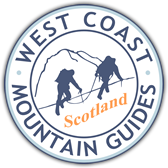
West Coast Mountain Guides
5.00
(23)
Mountain Leader
We are based in the shadow of Ben Nevis, the UK’s highest mountain and arguably the most iconic and sought-after winter climbing venue in Britain.
All our instructors and guides have extensive, relevant experience which is eagerly passed on to everyone taking part in instructional mountaineering courses, private guiding and worldwide expeditions. This background, together with a genuine passion for adventure, can only inspire and motivate our customers to achieve their own goals.
Languages
English
What people are saying about this trip
Michelle
5.00
Ken immediately made us feel welcomed and we had a good chat on the walk in before gearing up for the ridge ascent. Both my son and I had a fantastic experience thanks to Ken's calm, expertise in leading us over Tower Ridge and then descending via Ledge Ridge to round off a great day. Highly recommended!
Rachel
5.00
Ken was a fantastic guide, safe, experienced and took us on an incredible adventure!
Olivia
5.00
I usually do these things with my Husband, but we currently live in Singapore and I’m back visiting family and didn’t want to miss out. I was doubly anxious because our usual guide was unavailable, but Ken quickly put me at ease. For me that’s about feeling like I have all the information I need, being reassured that I’m making good time and having a few scheduled breaks for snacks etc. We also had a good chat, which made the walk in fly by. A very enjoyable day, I felt safe and comfortable throughout. I hope to be back in the future for more adventures.
Olivia
5.00
Private Guiding on the classic Tower Ridge, Ben Nevis North Face On two previous winter trips up Ben Nevis via the CMD route, I had marvelled at the majestic North Face and dreamt of fulfilling a route on it's flanks. This season, Ken helped me fulfil this dream by guiding me on the classic Tower Ridge (IV, 3). The whole experience was absolutely fantastic and Ken made sure to attend to every detail; from communications, equipment provision, weather and condition assessment and climbing advice on route. Ken's professionalism certainly enabled me to push my limits, as I felt completely safe within his guiding ability. I was fortunate to have moderate conditions on the day, and this enabled a fairly rapid and highly enjoyable ascent of the ridge in true Scottish conditions. I will definitely be back for more winter adventures
Nicolas
5.00
Thanks a lot to Dave for his knowledge of the region and shared enthusiasm on the amazing ascent of the Ben Nevis just before we get caught by a light rain once at the top! I felt safe at every moment -even in the more technical parts- and I’d definitely recommend anyone to trust West Coast Mountain Guides for their next mountaineering trip to Scotland! Explore-Share is also a must-do platform to make sure you’re in contact with the best guides wherever you want to travel!
You may also like
Find more mountaineering trips
Join our newsletter!
Stay up-to-date on the best adventures.








